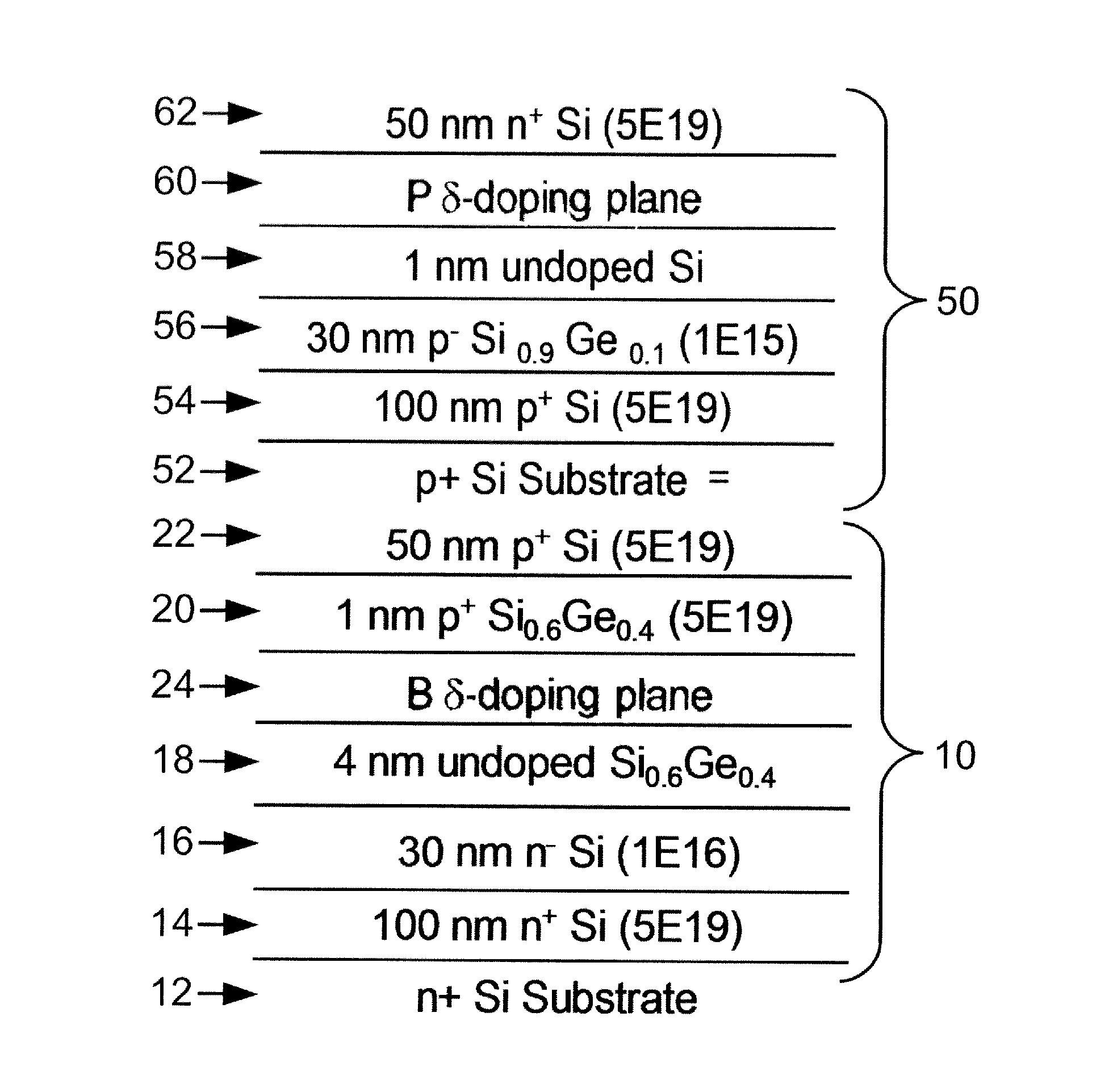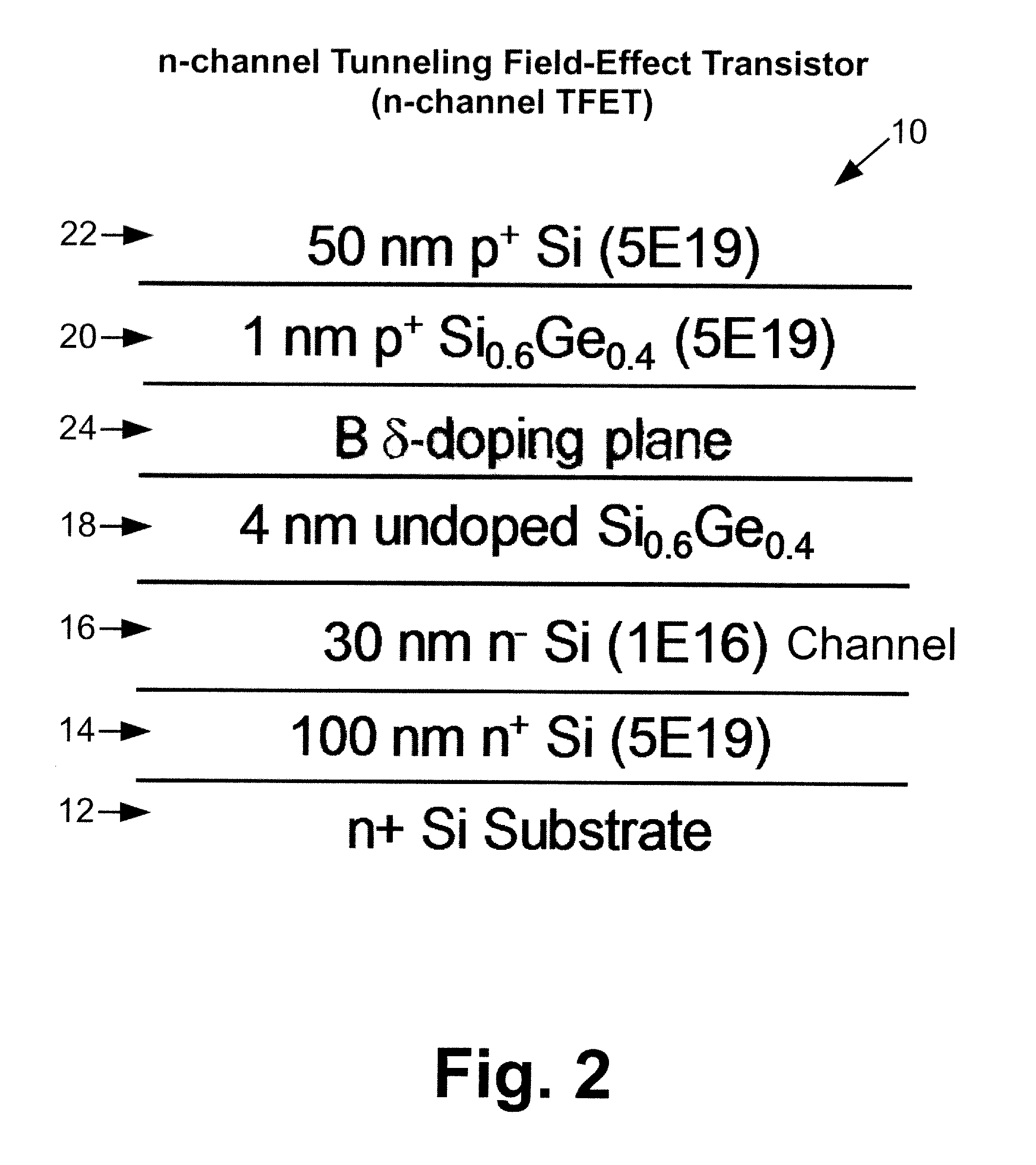Silicon-based tunneling field effect transistors and transistor circuitry employing same
a tunneling field effect transistor and transistor technology, applied in the field of electronic circuitry arts, electronic devices, electrical equipment, transistors, etc., can solve the problems of limiting the low-voltage operation of cmos circuitry, power consumption, speed of cmos circuitry, and approaching certain fundamental limits of channel length and power consumption
- Summary
- Abstract
- Description
- Claims
- Application Information
AI Technical Summary
Problems solved by technology
Method used
Image
Examples
Embodiment Construction
[0031]With reference to FIGS. 1-3, an illustrative n-channel tunneling field-effect transistor (n-channel TFET) 10 is described. FIG. 1 provides an illustrative layer structure including illustrative doping levels (in cm−2, denoted “cm-2” in some drawings) and layer thicknesses (in angstroms, denoted “ang” in some drawings), while FIG. 2 provides a simplified layer structure setting forth salient features in thickness units of nanometers and doping concentrations in cm−3. The illustrative n-channel TFET is formed on an n+ silicon substrate 12, with an optional growth quality-enhancing n+ silicon buffer 14 grown thereon, thus defining an n-type region of the n-channel TFET. This followed by formation of a channel region 16 which in the illustrated embodiment is 30 nm thick and doped n-type at n=1×1016 cm−3. A p-type region is formed on the channel region. In the illustrated embodiment the p-type region includes 5 nm of a silicon-germanium alloy 18, 20 having a germanium fraction of 4...
PUM
 Login to View More
Login to View More Abstract
Description
Claims
Application Information
 Login to View More
Login to View More - R&D
- Intellectual Property
- Life Sciences
- Materials
- Tech Scout
- Unparalleled Data Quality
- Higher Quality Content
- 60% Fewer Hallucinations
Browse by: Latest US Patents, China's latest patents, Technical Efficacy Thesaurus, Application Domain, Technology Topic, Popular Technical Reports.
© 2025 PatSnap. All rights reserved.Legal|Privacy policy|Modern Slavery Act Transparency Statement|Sitemap|About US| Contact US: help@patsnap.com



